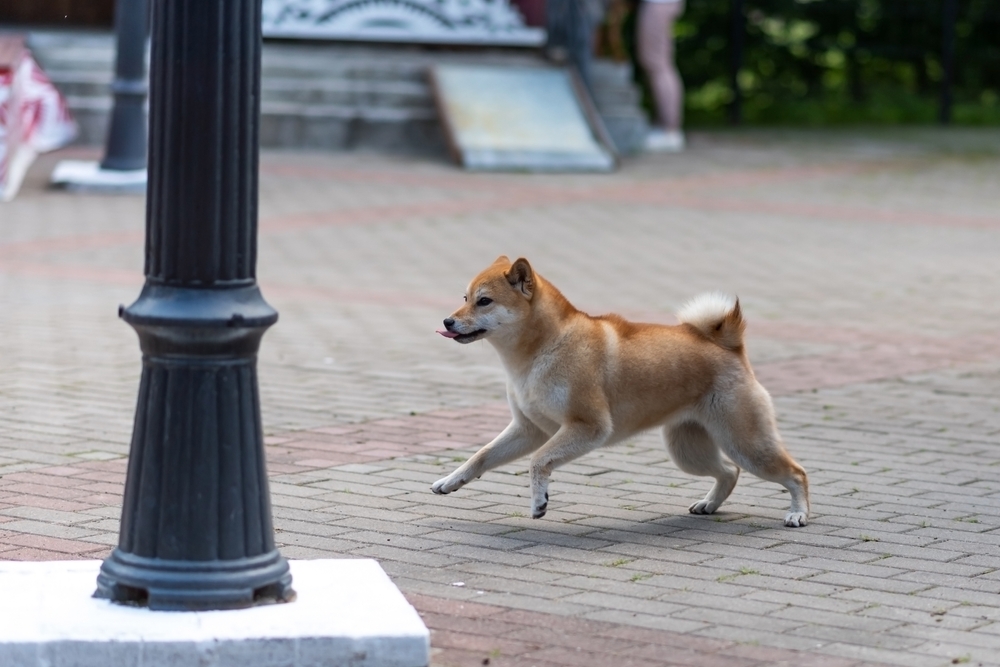
Yesterday, I made a big mistake. And it could have cost me my dog’s life.
We were having the carpet replaced in our home, and workers were walking in and out all day. My dog is normally being watched closely by my wife and I, especially with strangers in the home. However, with the craziness of the kids getting home from school, and workers walking in and out, we lost track of our pup for a short time.
Then we realized the front door had been left open by one of the carpet installers. Our dog was missing, and we feared the worst.
I after searching the front yard, I spotted her at the end of our long driveway, right next to the street. I called her name and got her attention. I shouted “Come!”
No response. She was too distracted by neighbors, cars, and other dogs being walked in the neighborhood.
I shouted “Come” again, this time more firmly. Still no response. Not good.
Luckily, I had prepared for this moment. There was an ace up my sleeve that I always hoped would work in this situation. I called her name again, and firmly shouted the word “Boomerang.” That immediately got her attention.
She bolted towards me in a full sprint, and back into the house. Crises averted! The emergency recall word worked.
The “Boomerang” Technique: How This Emergency Recall Word Can Save Your Dog’s Life

The Boomerang technique is a training method that, when executed correctly, can result in your dog reliably returning to you on command. The specific word you use is not important. It could be ‘boomerang’, or any other word you choose. (ideally one you don’t often use in everyday conversation.)
This technique involves creating an extremely positive association with the word “boomerang,” which will act as the cue for the emergency recall. By consistently reinforcing this command, you’ll be able to use it in urgent situations, such as when your dog is about to run into a busy street or approach a dangerous animal.
How to Teach Your Dog an Emergency Recall Word in 10 Minutes
Every single dog should know an emergency recall word. Yes, in an ideal world your dog would always respond to the word “come.” However, dogs can become distracted, and emergency situations may demand a word that has extremely positive associations.
Here’s how to train emergency recall quick and easily:
Step 1: Choose the Right Environment
Select a quiet, distraction-free environment for the initial training sessions. This will allow your dog to focus solely on your commands, making it easier for them to learn the desired behavior. As your dog becomes more proficient, gradually introduce distractions and more challenging environments to simulate real-world scenarios.
Step 2: Establish the Cue
To begin teaching the Boomerang technique, choose a unique word or phrase that you will use exclusively for the emergency recall command. For the purposes of this article, we’ll use the word “boomerang.” Ensure that the word is not used in any other context, so that your dog does not confuse the command with other cues or commands.
Step 3: Build Extremely Positive Associations
Now that you’ve chosen your cue, you’ll need to establish an extremely positive association with it. Start by saying “boomerang” in an upbeat and excited tone, and then immediately reward your dog with not one, but multiple high value treats.
Do not use kibble, and don’t use your dog’s everyday treats. Use something special! Pieces of chicken breast or steak. Whatever treat your dog goes nuts for!
And don’t just give one, but give the treat multiple times in a small pieces, one followed by the other. Dogs perceive this differently than several treats all given at once.
Repeat this process multiple times, reinforcing the positive association between the cue and the reward.
Step 4: Practice the Recall
Once your dog has made the connection between the cue and the reward, begin practicing the actual recall. Start by having your dog on a leash or long line. Allow them to move a few feet away from you, then say “boomerang” in the same excited tone as before. As soon as they turn to look at you, praise and reward them. Gradually increase the distance between you and your dog, always rewarding their return to you.
Step 5: Introduce Distractions
As your dog becomes more comfortable with the Boomerang technique, begin introducing distractions into the training environment. This might include other people, dogs, or noises. Remember to maintain a high level of enthusiasm when giving the “boomerang” command, and continue to reward your dog for their successful returns.
Step 6: Proof the Command
Finally, practice the Boomerang technique in a variety of environments and situations. This will help to “proof” the command, ensuring that your dog will reliably respond to it no matter the circumstances. Keep in mind that consistency is key; always reward your dog for their successful returns, and be patient as they continue to learn and refine their recall skills.
The Boomerang technique is an effective method for teaching your dog the emergency recall command. By establishing a strong, positive association with the cue and consistently practicing the command in different environments and situations, you’ll be well on your way to having a dog that can quickly and reliably return to your side when needed. Remember, the key to success with any dog training endeavor is patience, consistency, and a genuine love for your furry friend.
 Toledo, United States.
Toledo, United States.